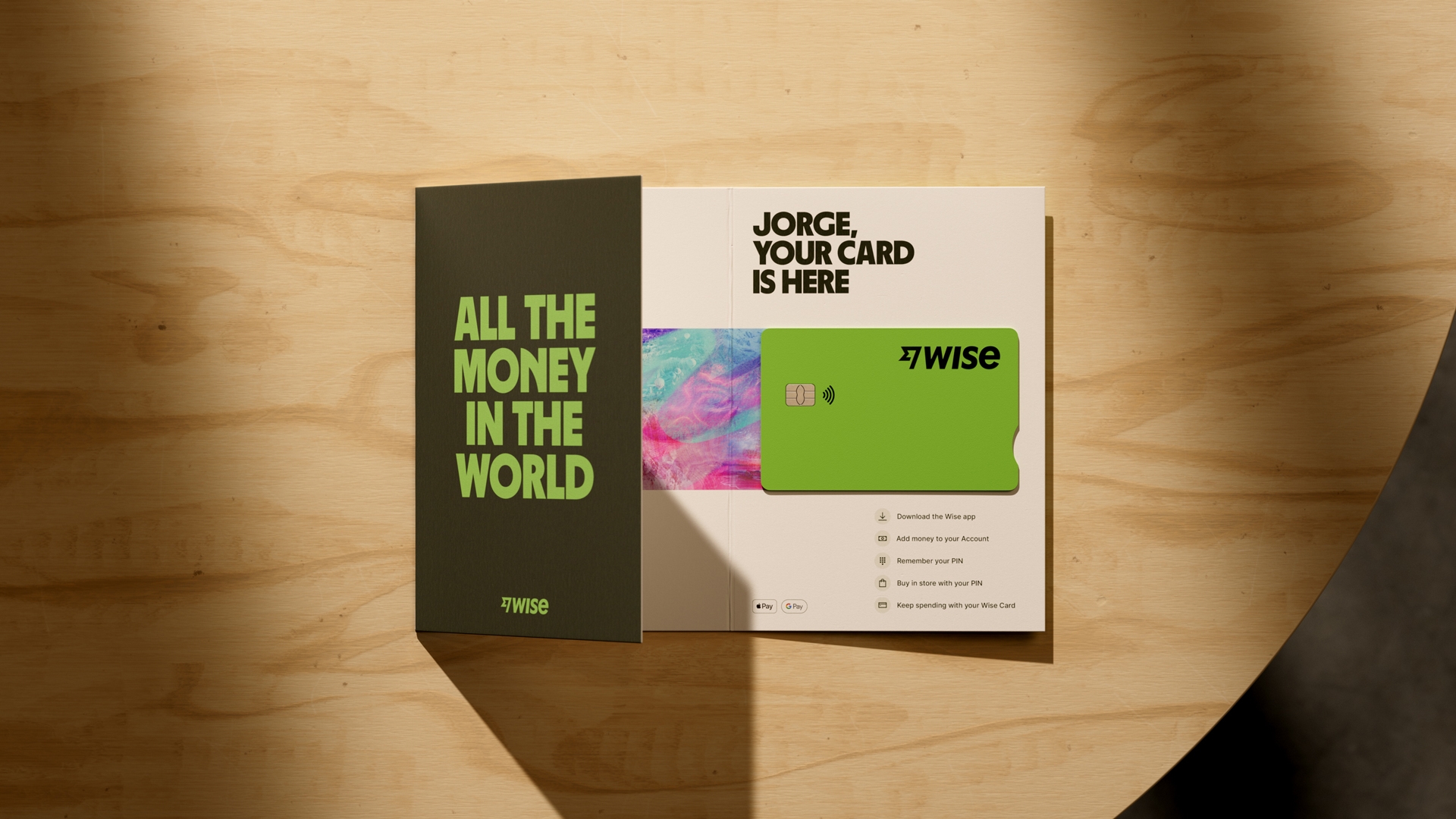Best travel credit card options in Australia in 2025
If you’re a frequent traveller, having a great international credit card can be a convenient option, and offer you ways to earn impressive rewards as you spend. With a travel credit card you can tap to pay when you’re at home and abroad, and get benefits which may include travel and lifestyle perks, rewards, discounts and air miles. Exactly what you get depends on the card you pick – this guide is here to help.
We’ll walk through our selections for the best travel credit card and also introduce some alternatives like the Wise card – a low cost international debit card which has no ongoing fees and mid-market exchange rates.
Travel credit cards: The best options in Australia
Here are some great options if you’re looking for the best credit card in Australia for travel. The right card for you will depend on your spending patterns and how often you’re overseas. We’ll look at some important factors to consider when you select the best travel credit card in Australia for you, in just a moment:
| Card name | Annual or Monthly Fees | Foreign transaction fee | Eligibility | Rewards |
|---|---|---|---|---|
| Latitude 28 Degrees Mastercard | 8 AUD/monthly fee | No foreign transaction fee | Based on credit check – supply your employer’s details and proof of income | Free flight delay pass, global data roaming, partner offers and 10 AUD/month of Latitude credit |
| Westpac Altitude Rewards Black | 285 AUD annual fee | 3% | 75,000 AUD/annual income required | Up to 6 reward points per dollar spent |
| ANZ Rewards Platinum | 149 AUD annual fee | 3%, rising to 3.5% on 2nd May 2025 | Based on credit check | Earn up to 1.5 points per dollar spent, get travel and purchase insurance and ways to earn cash back |
*Details correct at time of research – 4th March 2025
Travel debit cards – an alternative to credit cards
Travel credit cards aren’t your only option for overseas spending. Using a specialist travel debit card can be a great alternative which keeps down costs and makes your transactions in foreign currencies convenient and secure. Here are a couple of powerful travel debit card options to consider:
Wise card
Wise offers digital accounts which can hold 40+ currencies and which come with payment cards you can use to spend and withdraw in 150+ countries globally. Open your Wise personal account for free and add money in AUD from your bank or with a card. You can then convert to the currency you need with the mid-market rate and a low Wise conversion fee, or just leave your balance as it is and let the card convert for you at the point of payment.
- No fee to spend a currency you have in your account
- Currency conversion starts from 0.65% and accounts support 40+ currencies for holding
- Withdraw up to 350 AUD/month in 2 withdrawals for free*, then pay 1.5 AUD + 1.75% for further withdrawals
*Wise will not charge you for these withdrawals, but some additional charges may occur from independent ATM networks
Advantages and disadvantages of Wise debit card
Hold 40+ currencies and exchange between them with the mid-market exchange rate and low Wise fees. Currency conversion starts from 0.65% and varies by currency – and there’s no Wise fee to pay as long as you hold sufficient balance of the currency needed in your account.
| Advantages | Disadvantages |
|---|---|
| ✅ No ongoing fees
✅ Mid-market exchange rates ✅ Spend in 150+ countries conveniently
|
❌ Variable conversion fees apply
❌ ATM fees apply once you exhaust your free withdrawal limit ❌ 10 AUD card order fee |
More information about Wise ⬇️
With a Wise card, there’s no annual fee, no credit check and no interest to pay. It’s a good alternative for a travel credit card if you want to keep your costs low and see your travel budget in advance. Add money in AUD and change to the currency you need in your destination to lock in the exchange rate and manage your budget from your phone.
Wise downsides include the 10 AUD order fee for your Wise card and the card delivery time – you may need to wait 7 to 14 working days for delivery to Australia.
Revolut card
Revolut Australia offers 3 different plans to allow you to pick the account and card which will best meet your travel needs. You can open a Standard plan for no ongoing fees, or upgrade for up to 24.99 AUD a month. Higher tier accounts also have higher no fee transaction limits and extra features. You may get some discounted lounge access for example, or priority customer support.
- Hold and exchange 30+ currencies for travel spending
- Currency conversion uses the Revolut exchange rate with no extra fee, to your plan’s limit
- High no fee ATM limits on some account plans
Advantages and disadvantages
Revolut has 3 different personal plans which means you can choose an account with no ongoing fees for infrequent use, or upgrade for more features if you use your card often. Higher tier accounts have lots of travel benefits and higher no fee transaction limits which may ultimately keep your costs down.
| Advantages | Disadvantages |
|---|---|
| ✅ Choose different plans to meet your personal needs
✅ All accounts have some currency conversion without extra fees ✅ Make ATM withdrawals with no Revolut fee to your plan limit |
❌ 24.99 AUD/month fee applies to get all features
❌ Out of hours and fair usage fees may apply on currency conversion ❌ Standard accounts have very low no fee transaction limits |
More information about Revolut ⬇️
Revolut is a hugely popular provider of international accounts and cards, and has several different account options which can appeal to a range of people. You can start out with a Standard plan which has no monthly fee to see what you think of the service, and then decide to upgrade if you use your account often.
When you upgrade your account you will pay a monthly fee. There are also some other fees to know about including out of hours exchange fees if you’re changing currencies outside of market hours. If you exceed your plans’ no fee transaction limit, fair usage fees apply which can vary depending on the transaction type.
Pros and cons of travel credit cards
Travel credit cards are popular with customers looking for ways to spread the costs of their travel over several months, and spend while earning rewards and benefits. Cards have travel optimized perks like lounge access or insurance which can also appeal – but you’ll need to weigh these features against the costs of getting and using your preferred travel credit card.
| Advantages | Disadvantages |
|---|---|
| ✅ Earn rewards, perks and benefits as you spend
✅ Spread the costs of payments over several months ✅ Can be used as a payment guarantee when hiring a vehicle or checking into a hotel |
❌ Eligibility criteria apply including credit checks
❌ Interest and penalties can apply if you don’t repay in full ❌ Foreign transaction fees and annual fees can be high |
How did we choose the best travel credit card in Australia?
In our search for the best credit card for travel, we looked at currency conversion fees on the exchange rate used, annual and ongoing fees and the perks you get in return. There’s no single best credit card for travel – so weighing up the options before you sign up is essential. Consider how you spend and how often you’ll need to use your card overseas to decide which is right for you. Here are a few other important factors when considering the best travel credit card in Australia for your unique needs.
Travel credit card annual and ongoing fees
When you choose the best travel credit card for you, take some time to look at the ongoing costs you’ll need to pay. These may be in the form of an annual fee or a monthly card cost. There may also be extra fees if you want to add on supplementary cards for other family members to spend from the same account.
Not all travel credit cards have ongoing fees, but if yours does, this cost applies even if you only use the card infrequently. Minimising this ongoing cost can help to keep down your overall travel spending.
Overseas transaction fees
If you’ll be using your travel credit card to spend while you’re away from home – or to make travel cash withdrawals or spend in foreign currencies online – you need to know the overseas transaction fees which apply.
Overseas transaction fees are often added to credit cards for all foreign currency spending. These can be about 3% of the purchase cost – or even more. To give a sense of how this works – if your card has a 3% foreign transaction fee and you spend the equivalent of 1,000 AUD on an overseas trip, the foreign transaction fee will add up to an extra 30 AUD. If you spend 10,000 AUD on the card over a longer break, or a family trip, that’s 300 AUD – all in avoidable fees.
There are a few travel credit cards in Australia which do not charge a foreign transaction fee. However, these may still come with annual or monthly charges which you’ll also need to weigh up.
If you want to avoid overseas transaction fees – and keep away from ongoing card costs – using a Wise card might be a good choice. The Wise card is a debit card, not a credit card. This means there’s no credit check and no annual or monthly fee. You can add AUD to your account and change it to the currency you need to spend during your trip. 40+ currencies are supported for holding, and if you have the currency for the payment in your account, the transaction is free.
If you don’t have the currency you need in your account the card can simply do the conversion for you. In either case, Wise uses the mid-market exchange rate to convert your funds, and low conversion fees from 0.65% – far lower than credit card foreign transaction fees.
Credit card perks
When you start to shop around for a travel credit card in Australia you’ll quickly notice that most cards offer a broad range of travel and lifestyle perks and rewards. You may get things like:
- Travel and purchase insurance
- Free data roaming
- Lounge access or delay pass lounge access
- Air miles and rewards you can switch for travel benefits
- Cash back on overseas spending
- Discounts with travel partners and hotels
- Travel concierge
All of these perks are really attractive, but when you’re choosing the best Australian credit card for overseas spending, you’ll also have to weigh up the costs. Getting a huge array of benefits isn’t really so beneficial if the costs are far higher than they need to be when you use your card. In particular look at the annual fee and foreign transaction fee – and if you expect to use your card to spend and then repay over multiple months, look at the interest and any possible penalties too.
If the costs of using your travel credit card start to look less than optimal, consider adding in a travel debit card from a provider like Wise or Revolut for your day to day overseas spending, to minimise your costs.
Fees for withdrawing cash from overseas ATMs
If you have an international credit card, you can use an overseas ATM to withdraw local currency as a cash advance. Essentially you’re borrowing a part of your card’s credit limit as cash, to then repay as part of your monthly bill alongside your purchase spending.
This is a convenient service that allows you to easily obtain cash from an ATM in the unlikely event that you run out of local currency at your destination, without having to search for a currency exchange office.
To use overseas cash advances, you will need to know your card’s PIN number. Check you have a valid 4 digit PIN before you travel, and look at your card terms and conditions to see whether your credit card has an overseas cash advance limit.
Generally, overseas cash advances incur the following fees and interest:
- ATM fee – this is charged by the ATM operator
- Cash advance fee – this is charged by your card and can be about 3% of the withdrawals
- Foreign transaction fee – paid to your card provider, can be 3% or more
- Cash advance interest – this is often at a higher rate than your purchase interest, and applies instantly after the withdrawal
Overall, using your credit card to get cash at an ATM can be expensive and so is better for emergencies only.
Tips to use your card abroad
Let’s close up this guide to the best travel credit card in Australia with a few final tips.
Always pay in the local currency
You may be asked at the ATM or at a merchant when you’re abroad if you would rather pay for your purchase or withdrawal in AUD. This sounds nice as you can see immediately what your foreign currency purchase has cost you. However, it means you’ll pay more as the merchant or ATM can set the exchange rate and fees applied. Always pay in local currency wherever you are and let the card handle the conversion, to get the lowest cost.
Carry different cards with you
Have more than one payment method at all times when you travel, in case one is lost or stolen, or a merchant can’t take a particular card type. You may want to carry a travel credit card, a debit card from a provider like Wise and some local cash for example. You’ll then know you have ways to pay no matter what happens.
Check your card fees before you travel
If you’re thinking of using your credit card overseas be sure to check all the fee information before you transact. Getting caught out by unexpected costs can ruin a wonderful vacation – so take a moment to look at the foreign transaction fee, ATM withdrawal fee and any other important costs before you get your card out on your trip overseas.
Make sure your card provider has your contact information
Check all your details are up to date with the card issuer, as they may need to contact you if your card transactions are flagged as suspicious. If the card provider can’t talk to you because your phone number is out of date, you’ll usually find your card is blocked or cancelled.
Summary
Travel cards in Australia can offer some great perks and benefits and appeal to customers looking to earn rewards as they spend. However, they can also have fairly high monthly or annual fees, and foreign transaction fees every time you spend in a foreign currency. Compare your options for the best travel credit cards for you against some powerful international debit cards from providers like Wise or Revolut before you go overseas, to get the best available deal.
FAQ
What is the advantage of carrying a credit card for travelling abroad?
Getting a travel credit card in Australia before you travel can offer a range of travel and lifestyle perks and rewards like free travel and purchase insurance, data roaming, lounge access, air miles and rewards. However, you may also find there are costs which you need to think about including annual fees and foreign transaction fees.
What is the best card to use while abroad?
There’s no single best card to use abroad – it comes down to your preferences and spending habits. Many customers actually choose to have several payment methods when overseas – such as a travel credit card, debit card from a provider like Wise and some local cash for example.
How should I choose a travel credit card?
When you sign up for a travel credit card be sure to look at the currency conversion fees on the exchange rate used, annual and ongoing fees and the perks you get in return to decide on the best for your specific needs.


